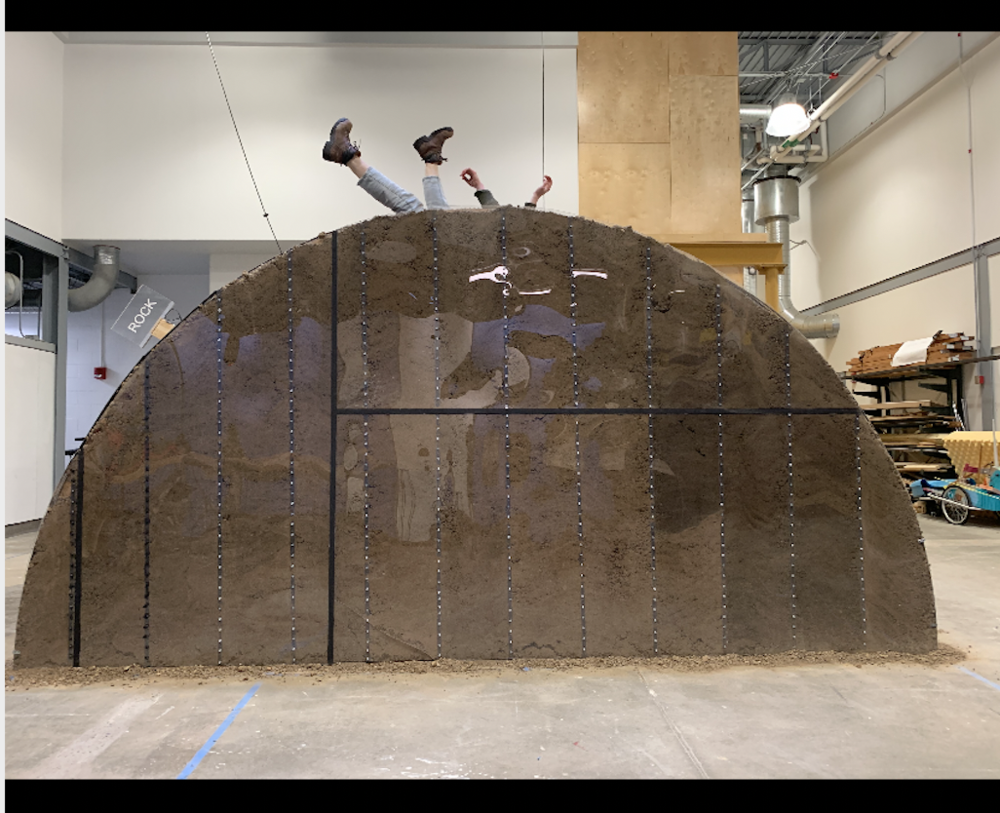


Plastic Abodes
Emily Smith, Penny W. Stamps School of Art & Design
Collaborators: cinematographer (Effy Grey), dancers (Nola Sporn Smith & Elyse Desmond), MFA Dance Research Candidate Leah O’Donnell and Angela M. Schöpke Gonzalez.
There is an exercise in Butoh, the avant garde japanese dance practice, where the dancer begins a daily task then mid-task the mind detaches and embarks on a nonlinear journey, carrying the body along for the ride. The aim is to capture the dancer’s transition from an inhabited corporeal self to a dehumanized but animate body – to reduce the human to the human’s physical material. Why would a dancer wish to do this? Because focusing on our own corporeality implicates us in the broader world of things and spaces – it collapses our sensation of privileged separateness.
I plan to design and choreograph a new sculptural-performative work called Plastic Abodes. In this work I will choreograph the entire production as well we design and fabricate all the sculptural pieces that operate as an interactive installation. The work will eventually live online as a film. My interests as a choreographer and a sculptor were clarified for me by my time as a performer in Leimay, a Butoh company in New York City. I had always sensed that each discipline was, for me, a continuation of the other. Human material can be conducted through space just as metal can be stretched and fixed. There is also a connection between Butoh and nature, the idea of nature as a thing utterly not-separate and apart from us, which I find stirring. By treating our bodies as raw matter we are prone to forming certain sympathies, or at least sensitivities, for our environments.
To choreograph these sensitivities I will be developing a new sculpture-performance titled Plastic Abodes. The development of Abodes will follow the route that I have adopted for my work in the past – drawing on my professional experience both as a dancer and as a metal fabricator. I will begin with research into robotics, automation, and environmental studies. I will then build a performance environment of organic forms made of soil, water, and plastic. I will also develop sculptural props for my dancers and work with them on a movement score. The performance of the dancers within an automated environment will be filmed – which will become the ultimate means of sharing my work. This practice, which starts with research and then leads to the construction of a world and then records a performance which takes place within that world, is one I have been executing over my last several projects and it has become my signature approach to art-making. For instance, Identifying as seeking PLUSH I created wearable sculptures which transformed the bodies of the dancers in ways which both exaggerated and stifled their movements. Eventually, I collaborated with a cinematographer to create a film of the performance at various locations along the Appalachian trail.
Plastic Abodes will elucidate the naturalness of the unnatural and the unnaturalness of the natural through speculative design, sculptural metaphor, performance theatre, and object theatre. I don’t intend to convey a simple environmental slogan or theme but instead hope that my work will leave an audience unsettled and newly sensitized to the complexities, perversities, and profundities of our relations with the built and natural environments.
Artists whose work I am interested in as research material include Ana Mendiate and Rebecca Horn. Specific research areas will include human prosthetics and speculative robotics.
